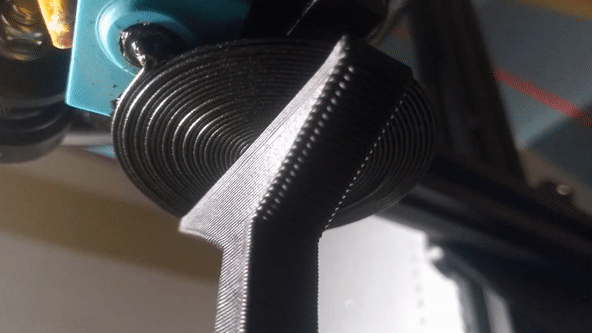Interested in the new hotness of printing previously-impossible overhangs? You can now integrate Arc Overhangs into PrusaSlicer and give it a shot for yourself. Arc overhangs is a method of laying filament into a pattern of blossoming concentric rings instead of stringing filament bridges over empty space (or over supports).
These arcs are remarkably stable, and result in the ability to print overhangs that need to be seen to be believed. We covered this clever technique in the past and there are now two ways for the curious hacker to try it out with a minimum of hassle: either run the Python script on a G-code file via the command line, or integrate the functionality into PrusaSlicer directly by adding it as an automatic post-processing script. The project’s GitHub repository has directions for both methods.
Here’s how it works: the script looks for layers with a “bridge infill” tag (which PrusaSlicer helpfully creates) and replaces that G-code with that for arc overhangs. It is still a work in progress, so keep a few things in mind for best results. Arc overhangs generally work best when the extruded plastic cools as fast as possible. So it is recommended to extrude at the lowest reliable temperature, slowly, and with maximum cooling. It’s not fast, but it’s said to be faster than wrestling with supports and their removal.
A few things could use improvement. Currently the biggest issue is warping of the arc overhangs when new layers get printed on top of them. Do you have a solution or suggestion? Don’t keep it to yourself; discuss in the comments, or consider getting involved in the project.










